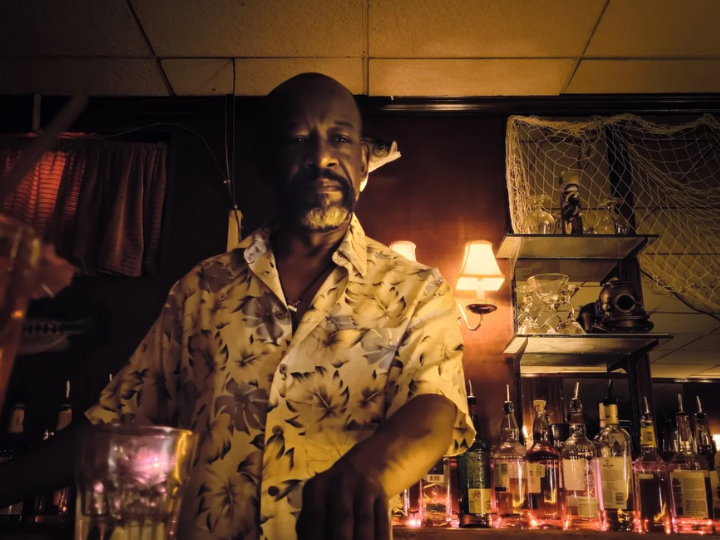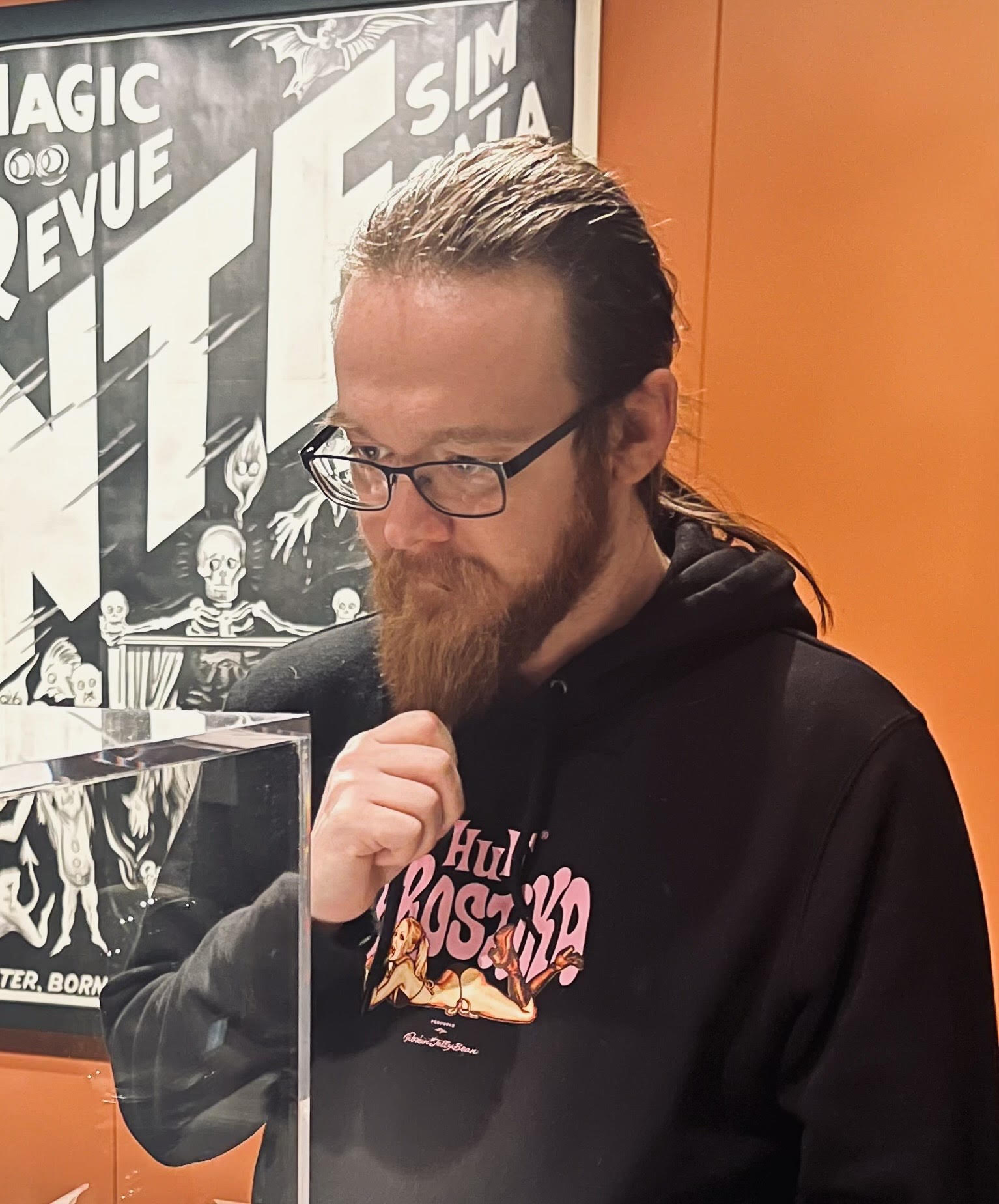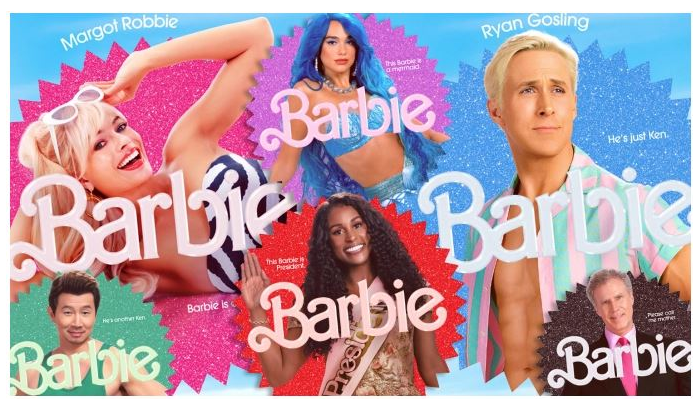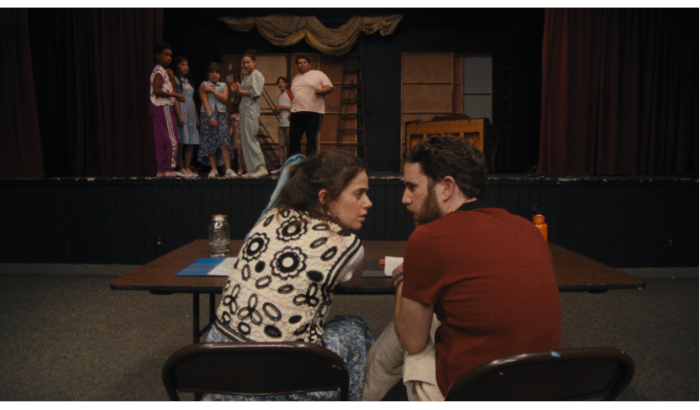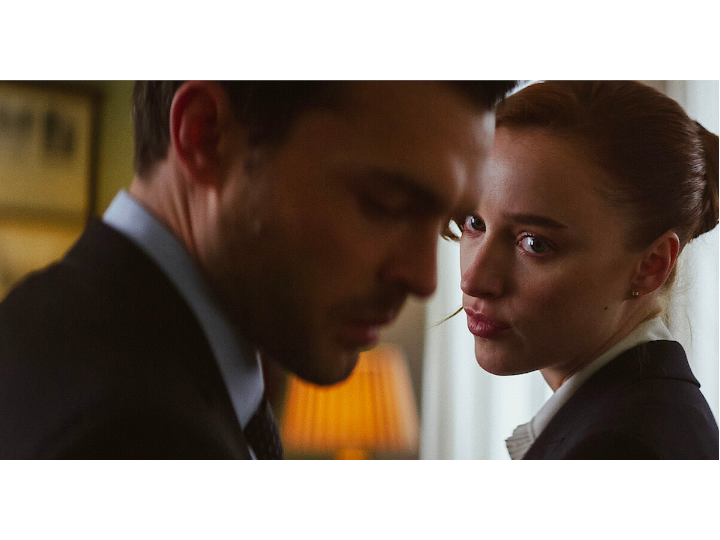The Boston-born filmmaker speaks about his latest feature, “There There,” before its belated local premiere at the Brattle
Written around the turn of the 21st century, Andrew Bujalski’s Boston-shot debut feature “Funny Ha Ha” (2002) was eventually designated as the starting point for a specific wave of mid-to-late aughts filmmakers. Which turned out to be an unfortunately reductive fate for that very great movie—because as much as “Funny Ha Ha” really was the “initiation of a new moment in American independent film,” it was also like a youthful last word on the writer/director-forward independent films of the 1990s. And that latter connection has seemed even more solid as the years have passed. At this point, seven features in, Bujalski’s carefully-scripted comedic dialogue, close attention towards observed character detail, and purposeful use of film genres and formats, to name just three qualities found in “Funny Ha Ha” and his other movies, put him as much in line with peers from the 90s—like Richard Linklater, Kelly Reichardt, or Quentin Tarantino—as with anyone else from the millennial era.
Which is a longwinded way of saying that Bujalski, now 25 years into his artistic practice, has endured and emerged as one of the major contemporary American narrative filmmakers, period. Yet in the true fashion of a post-millennial commercial artist, his work has rarely if ever been granted the same level of distribution often enjoyed by his peers from prior generations. Take as case in point his latest feature, “There There,” which was released to a grand total of five screens in 2022, and will have its much-belated Boston premiere at the Brattle Theatre this Monday, October 20, at 6 p.m., with Bujalski speaking in-person following the screening.
“It’s such a strange movie, and it’s been such a strange experience,” Bujalski said during our interview, which is transcribed below. “This will be the Boston theatrical premiere happening three years after the movie came out—which is absurd, but also kind of indicative of this movie’s peculiar journey.”
To be specific about what’s so strange, absurd, and peculiar about it: “There There,” despite being written in a fairly classical literary style—the script lays out six individual scenes (plus musical interstitials), most depicting a conversation between two characters (with a few twists to keep things fresh)—was then produced in an unprecedented experimental cinematic style: Writer/director Bujalski, cinematographer Matthias Grunsky, and Boston-based sound engineer Eric Masunaga oversaw from their respective cities via Zoom, while the movie was shot using iPhone camera kits operated by remote crewmembers paired with just one actor each. Meaning that every scene between two people ostensibly in the same place was in fact produced across two different locations, by two different remote teams, at two very different points in time. Which also means the characters are necessarily fated to never share the same frame—a defiant formal concept made all the more resonant by its deployment in the midst of a pandemic.
Yet just as “Funny Ha Ha” was in a way reduced by its definition as the ultimate mumblecore film, the more recent “There There” was also hobbled by its designation as, per the New York Times, “the ultimate pandemic film” (“the [COVID thing], more than anything, is what killed us in the marketplace,” Bujalski mentioned, “if you say, come see the COVID movie, nobody’s going to see that. Which I understand—I’m not either.”) That was another reductive misconception, for “There There” strings together a person-to-person narrative of troubling modern experiences that extends far beyond the associations of the COVID years. Studying with both sharp levity and earned seriousness the endless chain reaction of mental anguish currently afflicting our shared lives, “There There” stands out three years after its release as an uncommonly perceptive depiction of the contemporary American condition.
Bujalski spoke to us on the phone last week from Austin, Texas. The following transcript has been condensed and edited for clarity.
When “There There” was released, it was mostly discussed within the context of being a “pandemic movie,” and then also, within the context of its experimental production. So let’s start elsewhere by speaking about the film’s story. Tell me about your writing process apart from your filmmaking process—how do you go about composing a piece like this?
I did start with the technical-experiment aspect of it. I knew how we wanted to make it, in broad strokes. And COVID was a great motivator on that, but it wasn’t really the core of the idea. The core of the idea, I think, was this grand editing experiment. Anytime you make a movie, you’re trying to build a grand truth out of a million little lies. Every edit is a magic trick. So it was always in the back of my head, like, what if you push the fakery of editing until you end up with something that’s hard to find your place in? Until you reach this place of inherent cognitive dissonance—[in this case], watching actors who are nowhere near each other nonetheless build something together through an edit.
So to write it, I just started with, I’ve got a concept here, but I need a story—and what story makes sense of that concept? I played with a lot of different ways to approach it, and eventually came to this sort of “La Ronde” (1950) structure, with the baton passing between characters, and finding the characters in different contexts. But all of these scenes and interactions, they’re all in one way or another about trust, faith, and connection. And then building that connection across divides—because that’s what we were doing. I mean, this whole movie was an incredible trust exercise. To ask actors not only to work as hard as they had to work to do this, but also to do it while having no idea what their partner was doing on the other side? That’s an extraordinarily leap of faith—and that’s what the movie is all about.
So it started from the concept, then was built out character by character. Maybe sometimes you’re writing for an actor … and sometimes you get that actor, and sometimes you don’t … but it helps spark things either way. And eventually you have something that hopefully feels like one piece of organic matter—even if you’ve constructed it in a quite artificial manner.
One reason I ask you about the writing is, while “There There” is built from this inherently cinematic technique, it’s also composed of six precisely written and in a sense classically literary dialogue scenes. And these scenes, because of their length [each running about 15 minutes], often depict extremely nuanced ranges of emotion and feeling.
To use the first scene between Lennie James and Lili Taylor as an example [they play two strangers getting to know each other the morning after spending a night together]—it’s anxious, it’s erotic, it’s tentative, it’s warm, it’s cold, it’s warm again, it’s cold again … You see a range of interaction happening that you really can’t see happening in a usual scene of two or three minutes. I’m curious about how you reach that kind of shape, six times over.
You know, just grinding the material. As I sit down to write, I’m thinking primarily about character. And with this, I approached it as a kind of playwriting exercise, because I knew I wasn’t going to be moving the frame around a lot. I knew that I’d be putting aside a lot of cinematic tools. That was the particular trick and challenge of this movie—we were limited. We had a limited visual palette [shooting with iPhone Pro Max 12s utilizing the FiLMiC Pro application], so that was our visual language. And obviously we were shooting remotely, so I was not in the room, and the cinematographer was not in the room. So in part it became, how do I tell a story that has to be, if not literary, then at least conveyed almost entirely through performance?
It had to be a fishing expedition. It had to be me saying, let’s try this, let’s try that, let’s do it again, let’s do it again, let’s do it again—which is why we had 80 hours of footage in the end. It was wringing everything we could from these poor actors. And then going through that same process again in the editing. And it’s Lili Taylor and Lennie James, so they’ve given me a whole lot of great stuff. But then the game becomes creating these relationships [between actors filmed in different locations] with every cut.
And for me that goes to what is maybe the heart of what I love about watching actors on screen. They always have to hold the whole situation in their heads! They have to imagine it.
I like [how “There There”] is almost a literalization of that … that even if we’d been making a more conventional movie, even if Lennie had been in the room with Lili, then Lili would still have to look at him and imagine this man that she had this particular relationship with, and these feelings she has for him. And in this case, it’s like she’s completely imagining that, because when she filmed her side of the scene, she didn’t even know what actor would be playing the other part. And so I can watch her imagining this man, and then I can cut to the man she was imagining—which to me is a great magic trick.
You find it all as you go, and as with any kind of filmmaking, the ideas gradually give way to the reality of the material. And you cut the parts that don’t work and hide them under the carpet and hope nobody ever asks you about them.
I’ve seen it mentioned in other interviews that it’s hard to come up with precedents for how this movie was shot. I took that as a challenge, but honestly the only thing I can really think of are the films of Abbas Kiarostami, where the framing of the scenes often makes it deliberately clear the performers are acting opposite the camera, as opposed to opposite another performer. But the use of technology here makes “There There” very different.
The precedent I was aware of was not so much another feature-length film, but … I thought the actors, particularly the more experienced professional actors, in some ways are now trained for this. First, by the proliferation of self-taping for auditions. They all do an enormous amount of acting with themselves already in their auditions, because most of that has become self-tape now. So this was kind of like “Self-Tape: The Movie.”
And second, I mean … Most of the biggest movies in the world now are green screens. There’s a whole lot of Marvel movies where people are acting with tennis balls. So this was some of that, as well. That was one of my dumb jokes—we’re making a big green screen movie, but we can’t afford the green screen.
That reminds me of one reaction I had watching “There There,” which was that by doing “Self-Tape: The Movie”—to borrow your phrase—it points at how the traditional manner of film production is, perhaps, extremely wasteful. The very idea you could do it this way maybe points at how illogical it is to do it the more traditional way.
But I’m certainly not trying to undo the old ways. I assure you that as soon as we were done with this, I thought, I feel very eager to get on a real set with real humans and do things the old-fashioned way.
I mean, yes, doing things the conventional way can be a pain in the ass. And practically speaking, it’s also kind of gotten too expensive to be viable anymore, at least in the United States—
That’s kind of what I mean.
Sure. But as a method goes, like, [traditional film production] is great! It’s great to get all the people together. Of course there’s cheaper ways to do it—there’s still kids out there making indies in their backyard, and that’s fantastic.
So, by no means do I think I’ve reinvented the wheel. And if I have re-invented the wheel, this is a one time-use wheel.
Right. I think maybe what I was personally seeing in “There There” was not so much a reinvention of the wheel, but a critique of how the wheel has become too big.
Well, the wheel has become too big. But you know, I could have done “There There” in my backyard with five people [as opposed to doing it remotely]. And maybe I will, maybe that’s the next thing, I don’t know. But we did this in far flung backyards all over the place instead.
Normally when you interview a filmmaker about their movie, it’s either for promotional reasons around the premiere, or more than 10 years later for an anniversary. That makes this a rare case—we’re talking about “There There” about three years after it was distributed.
Both on screen and off, it’s disjointed in space and time. It’s a movie where you never know where you are, or when you are, in the story. And since we made the whole thing remotely, there’s still several locations in that movie that I’ve never set foot in, and never will. So in a way, the movie was made in the void, and then released into the void. Which is perhaps a common fate for 21st century movies, anyway.
Of course you would like the thing to have had a larger and friendlier reception. But by the same token, it also feels right for it to be lurking out there, waiting to be discovered. That feels like the kind of movie it’s supposed to be. The movie that you didn’t know existed until it snuck up on you. So I’m glad it’ll get a chance to sneak up on people at the Brattle.
You used the phrase, “not knowing where you are or when you are.” I just realized I’d never considered the possibility that “There There” is non-linear—that the scenes don’t necessarily occur in the same order we’re seeing them.
Yeah, and especially, I think the thing that sometimes throws people is: In that first scene with Lili, Lennie does tell a story about a drunk girl getting in an accident outside his bar. And then in the last scene, [redacted] is talking to [redacted], and, you know—a drunk girl’s leaving the bar, presumably to get in her car. Not to say that … by no means is it clear that this is the same person … but it raises the question.
I had noted the line in the first scene as a reflection of what happens at the end, but hadn’t considered whether it was literally referring to the same person. And now I’m kind of devastated.
It’s entirely up to the viewer, because we’re not rooting you in anything. The movie does have a beginning and middle and end. So in that sense, you know, of course it’s linear.
But I will say, because I’m a lunatic, after I finished this movie, to whatever muted reception it got, I couldn’t stop working on it. So there’s another version of “There There” now, a three-screen installation. And in that version, it is on a loop, so there is no beginning and no middle and no end. You come in whenever you come in, you leave whenever you leave, and so it’s all the more unrooted in time and in space. Especially because you’re also surrounded by three screens and you don’t know where to look.
As you’ve worked on the installation version, what are some of the later surprises you’ve experienced with the material?
It’s an odd piece, right? It falls in the cracks between the film world and the art world. So once again, I’ve certainly made things difficult for myself. But for me, [the installation] also fulfilled a pretty deeply rooted primal dream. I think as a kid who grew up loving movies, and being obsessed with movies, you pretty quickly start having dreams of being inside the movie. You know, like in “the Purple Rose of Cairo” (1985)—like, what would it be like if I were in there?
And in a weird, clonky, experimental way, this installation is my attempt to do that. Because I realized we’d already built physical separation into “There There,” and I thought, I can take these shots of people who are thousands of miles apart, acting opposite each other, and I can build that in a room. I can put those people across a room from each other, and then I’m standing in the center, and I’m literally in the middle of the movie. And then as a viewer, you have to make your own choice. You have to learn how to live with that.
For a lot of people, when they walk into the installation, the first instinct is to try and re-movie it. Like, I’m going to swivel my head on every line. Which it quickly becomes impossible to do, plus also your neck hurts. And it’s a big room, so you’ve got to decide where you want to be, and if you want to sit or if you want to stand …You have to settle in one place. It physicalizes your relationship [with the film]. You have to develop your own relationship to it.
Again, I’m not trying to reinvent the wheel. I’m not saying this is the future of movies—because it’s not. But it’s been an opportunity for me to try something I’d always wanted to try, somewhere deep in my primal consciousness, or subconscious.
“There There,” presented by Andrew Bujalski. Brattle Theatre. Monday, October 20. 6 p.m. $15.
This article was produced for HorizonMass, the independent, student-driven, news outlet of the Boston Institute for Nonprofit Journalism and is syndicated by BINJ’s MassWire news service.

